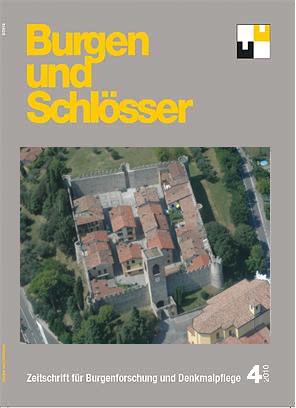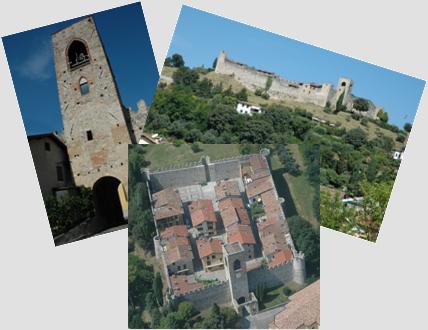The Ricetti of the Valtenesi
In cooperation with the Swiss castle and settlement scientist Thomas Bitterli a research work regarding a special type of castle in the Valtenesi - the region in the southwest of Lake Garda in Italy - has been developed in the time from 2006 to 2010.
The Italian castle scientists use for that special kind of not-noble castles the term "castello ricetto" (Pl. "castelli ricetti"). We do not have a German equivalent for those castles built by the population as a shelter for the protection of goods and life, so we use in German the word Ricetto (in English as well) as a term. Ricetti are unknown north of the Alps, but in Italy - aside from the Valtenesi especially in the Piemont region – they are rather common. For that reason this publication regarding that subject is the first in German language.
 |
The report has been published in magazine 04-2010 of "Burgen und Schlösser" of the Deutsche Burgenvereinigung (page 202-216). The magazine can be ordered via http://www.deutsche-burgen.org. Due to the limitation of space in magazines BINSY offers the opportunity to download the publication with a huge number of additional photos – especially air photos from all Ricetti from all sides (simply click on the symbol below - due to the size of document with less quality of photos and graphics). Additionally you'll find some air photos in the database, file "Burgen in Europa" (then click Ricetti i.d. Valtenesi, incl. map, German only). For download (ca. 8 MB)
click here ...
|
Summary
In the region Valtenesi – located at the southwest side of the Lake Garda in Italy – there are a great number of partly well preserved castles of a special type in a rather small area. The Italian castle scientists call that type ricetto what we can translate with shelter castle. They are waiting for a detailed analysis and an appropriate publication – especially in German and English. That research is worth it’s efforts because these shelters are a good example for the fact that even the normal population was able to build powerful and sophisticated castles by own means and with approval of the lordship. These fortifications are very similar to the imagination we have got today of a noble fortified castle. The mission of these fortifications – following the name ricetto (shelter) - was to save goods and life of the population during aggressions and invasions.
As the description of the ten examples shows all these shelters have lost their primary mission in the course of time and history and due to the military functionality the walls and towers had been strengthened with active components of defence as slits, gun holes and wall-walks as well. Of course the main concept and structure – closed curtain walls with a main fortified tower that contains or protects the entrance gate - had not been changed. Within nine of the ten examples this gate tower (mastio) today is still in function as a bell tower (campanile).
In all cases of the curtain walls there are additional towers – at least one – as wall towers or corner towers. The ground plan of these additional corner towers is round in case of Moniga del Garda, Carzago, Desenzano and Bedizolle. In all other cases they are angular. Semicircular open wall towers we find at Moniga and Bedizolle, all other existing ones are angular as well.
Well preserved are the fortifications of Moniga, Padenghe, Soiano, Carzago, Bedizolle and Puegnago. Only in parts or strongly changed by modern utilisation we can explore the shelters of Polpenazze, Solarolo, Scovolo and Desenzano. In any case we can still realize the primary plan of a typical shelter of the 10th century.

